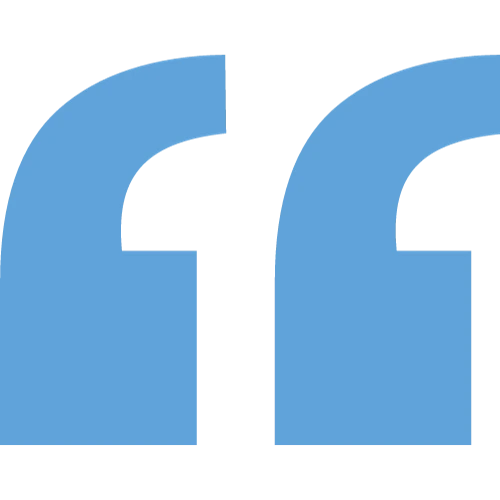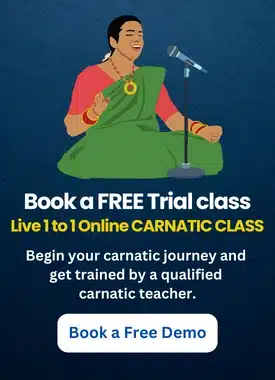Raagam, Thaalam and Shruthi form the foundation of Indian Classical Music. Well, not just classical but for all the genres out there. A raag gives melody, while taal provides rhythms. Shruthi makes us understand what pitch is.
This blog explores the different types of raga details, different types of thalam and different types of Shruthi in Carnatic Music.
Raga in Indian Classical Music
What is Raga?
A framework of swaras that serve as a foundation of melody is called a Raga. We know that the Carnatic and Hindustani are the types of Indian Classical Music ragas.

Rāagam is more about passion for the outcome rather than passion for the action in itself. – Paul Harvey
Raagam in Carnatic Music
This is considered as the heart of South Indian Classical music. Raagam, a Sanskrit word means “something that colors your mind“. In Tamil South Indian classical music, Raagam is known as Nadham. Each Carnatic music ragas has its own uniqueness and speciality.
How Many Raagams are there in Carnatic Music?
Carnatic Music features an endless number of raags with 72 primary melakarta raags forming the foundation. Thousands of janya raags in music branch out of these parent scales. While these raagams are evolving, the exact number is yet to be known.
What are the Types of Raag in Carnatic Music?
In ancient tamil Raagam was known as “Pan”
Janaka Raagam in Carnatic Music is popularly known as “Thaai Raagam”. It has its own characteristics and speciality. In technical terms, Janaka Raagam is denoted as Melam, MelaKarta, Karta Raagam, Samooorna Ranga Raagam”.
What are the Characteristics of Janaka Raga
- They must contain all seven swaras in both ascending and descending scales.
- Janaka ragas must use fixed Shruthi for those swaras (no mixing of variants or different types of Shruthi)
- They are grouped into 12 chakras(sets). Each set contains 6 ragas based on the combination of swaras used.
- Janaka Raagam serves as the theoretical framework for understanding and classifying all the ragas.
With the same characteristics and rules, there are 72 Janaka Ragas in our Carnatic music.
Here is the list of ragas are known as “72 Melakartha Raagams“
| Chakra No | Chakra Name | Rāga No | Melakarta Rāga Name |
| 1 | Indu | 1 | Kanakangi |
| 2 | Ratnangi | ||
| 3 | Ganamurti | ||
| 4 | Vanaspati | ||
| 5 | Manavati | ||
| 6 | Tanarupi | ||
| 2 | Netra | 7 | Senavati |
| 8 | Hanumatodi | ||
| 9 | Dhenuka | ||
| 10 | Natakapriya | ||
| 11 | Kokilapriya | ||
| 12 | Rupavati | ||
| 3 | Agni | 13 | Gayakapriya |
| 14 | Vakulabharanam | ||
| 15 | Mayamalavagowla | ||
| 16 | Chakravakam | ||
| 17 | Suryakantam | ||
| 18 | Hatakambari | ||
| 4 | Veda | 19 | Jhankaradhwani |
| 20 | Natabhairavi | ||
| 21 | Keeravani | ||
| 22 | Kharaharapriya | ||
| 23 | Gowrimanohari | ||
| 24 | Varunapriya | ||
| 5 | Bāna | 25 | Mararanjani |
| 26 | Charukesi | ||
| 27 | Sarasangi | ||
| 28 | Harikambhoji | ||
| 29 | Dheera Sankarabharanam | ||
| 30 | Naganandini | ||
| 6 | Rutu | 31 | Yagapriya |
| 32 | Raga Vardhini | ||
| 33 | Gangeyabhushani | ||
| 34 | Vagadheeswari | ||
| 35 | Shulini | ||
| 36 | Chalanata | ||
| 7 | Rishi | 37 | Salagam |
| 38 | Jalarnavam | ||
| 39 | Jhalavarali | ||
| 40 | Navaneetham | ||
| 41 | Pavani | ||
| 42 | Raghupriya | ||
| 8 | Vasu | 43 | Gavambodhi |
| 44 | Bhavapriya | ||
| 45 | Shubhapantuvarali | ||
| 46 | Shadvidhamargini | ||
| 47 | Suvarnangi | ||
| 48 | Divyamani | ||
| 9 | Brahma | 49 | Dhavalambari |
| 50 | Namanarayani | ||
| 51 | Kamavardhini | ||
| 52 | Ramapriya | ||
| 53 | Gamanashrama | ||
| 54 | Vishwambari | ||
| 10 | Disi | 55 | Shamalangi |
| 56 | Shanmukhapriya | ||
| 57 | Simhendramadhyamam | ||
| 58 | Hemavati | ||
| 59 | Dharmavati | ||
| 60 | Neetimati | ||
| 11 | Rudra | 61 | Kantamani |
| 62 | Rishabhapriya | ||
| 63 | Latangi | ||
| 64 | Vachaspati | ||
| 65 | Mechakalyani | ||
| 66 | Chitrambari | ||
| 12 | Aditya | 67 | Sucharitra |
| 68 | Jyotiswarupini | ||
| 69 | Dhatuvardhani | ||
| 70 | Nasikabhushani | ||
| 71 | Kosalam | ||
| 72 | Rasikapriya |
Janya Raagam
These are the raagams that originate from melakarta janaka raagams. Janya ragas are flexible and artistic in nature unlike janaka raagams. There can be any number of swaras in their arohana and avarohana.
Janya Raagam is classified into 4 major types. These classifications are based on the Swaras present in both Arohana and Avaroharana.
The classifications are
- Varja Raagam
- Vakra Raagam
- Upanga Raagam
- Pashanga Raagam
Varja Raagam
In this kind of Janya Raagam if there are missing elements in both Aarohana and Avarohana then it is said to be Varja Raagam.
Example
In Hamsadwani Raagam, the Swaras Ma (Madhyamam) and Dha (Dheivadham) will be missing in both Aarohanam and Avarohanam. So this is considered to be a Varja Raagam.
Vakra Raga
In Sanskrit the term Vakra represents “to be unstable or in disorder“. This kind of Raagam has the tendency to change its series either in Arohana or Avarohana.
Example
Sahana Raagam
Aro: Sa, Ri, Ga, Ma, Pa, Dha, Ni, Sa
Ava: Sa, Ni, Dha, Pa, Ma, Ga, Ma, Ri, Ga, Ri, Sa
Upanga Raagam
The Janya Raagam that takes the Swaras and Swarasthaanas from the Janaka Raagam is called Upanga Raagam in carnatic Music.
Example
- Hamsadvani
- Mohanam
- Pantuvaraali
- Abogi etc.
The same Raagam can be either Vakra Raagam or Varja Raagam or Upanga Raagam.
Pashanga Raagam
The Janaka Raagam that adds some Swaras with already existing Swaras in the respective Janya Raagam is called Pashanga Raagam.
Example
- Kamboji
- Bhairavi
- Saranga etc.
What is Thalam?
In South Indian Classical Music, Thalam means a beat that is used to measure time or rhythm cycle. Thalam helps to maintain the perfect rhythm of the song constantly.
How Many Talas are there in Carnatic Music
Tala is the rhythmic framework that organises time in. In Carnatic Music, there are 7 main different Types of thalams that we learn and practice. These are popularly called “Saptha Thaalas”. These Sapta Thaalas have 3 particular Angas.
What are the 3 Angas of a Thalam?
These Angas form a Thalam structure. There are 6 different Angas in the ancient period. But at present time we are following only 3 Angas. They are as follows with their symbols and explanations below:
| represents LAGU
O represents DRITHAM
U represents ANU-DRITHAM
- In Thalam Lagu represents 1 beat followed by fingers.
- Dritham means 1 beat followed by 1 flip over
- Anu-Dritham means 1 beat followed by 1/2 flip over.
What is Suladi Saptha Talam?
Suladi Saptha Talam refers to the 7 basic rhythmic talas used in Carnatic Music. These talas form the foundation of the rhythmic structures in compositions including the improvisations.
Types of Thalam in Carnatic Music
| Suladi Saptha Talam | Structure | Avartanam | Feature |
| Dhruva Talam | Laghu-Drutam-Laghu-Laghu | 4+2+4+4=14 | Longest among the basic talam |
| Matya Talam | Laghu-Drutam-Laghu | 4+2+4=10 | Balanced and symmetrical |
| Rupaka Talam | Drutam-Laghu | 2+4=6 | Commonly used in compositions |
| Jhampa Talam | Laghu-Anudrutam-Dhrutam | 2+1+2=7 | Talam with anudrutham |
| Thriputa Talam (Adhi Talam) | Laghu-Drutam-Drutam | 4+2+2=8 | Widely used in chatustra jathi |
| Ata Talam | Laghu-Laghu-Drutam-Drutam | 4+4+2+2=12 | Longer avaranthanam |
| Eka Talam | Laghu | 4=4 | Simplest talam |
Jathis In Thalam
Jathis can be seen in Alankarams which comes after Thaatu Varisai. The Lagu varies completely based on Jathi. These Jathis can be classified into 5 types as per their counts.
Classification Of A Jathi
The Jathi can be classified as per the Lagu. The classifications are as follows.
- Thisra Jathi – It has 3 beats. An artist uses 3 Aksharakalam while performing Thisra Jathi.
- Chathusra Jathi- The Chathusra Jathi has 4 beats. The famous Adhi Thalam is Chathusra Triouta Thalam
- Kanda Jathi – The Kanda Jathi has 5 beats. An artist uses 5 Aksharas while performing Kanda Jathi Thalam
- Misra Jathi – The Misra Jathi has 7 beats. An artist uses 7 Aksharas while performing Misra Jathi.
- Sankeerna Jathi- The Sankeerna Jathi has 9 beats. An artist uses 9 Aksharas while performing Sankeerna Jathi.
7 kinds of Thalam with 5 Jathis form 35 Thalams.
Swaras and Swarasthas
In South Indian classical music there are two most important basic aspects to know. They are Swaras and Swarasthanas.
In musical language, it is known as NOTATIONS. (Sa Ri Ga Ma Pa Dha Ni Sa). Swarsthanas are nothing but the placement of swaras. Each swara has a unique placement. Swarasthanams are the identification of each Swara. It differs for each raga. To identify these Swarathanas, Sruthi is important. In the same way, Sruthi helps to bridge the gap between the measured values of Swarasthanas. Even the gap, calculation, beat, and count are accurately designed by our ancestors from ancient times. To learn or sing or perform well with manodharma listening to a concert or song is most important.
Let us see an example below to know how the Swarathanas get differentiated with their respective SRUTHI from one Raagam in carnatic Music to another one.
Examples
- Raagam Begada Janya Raagam of Sankarabaranam (differs in Madhyamam (Ma))
- Raagam Saveri Janya Raagam of Mayamalava Gowlai (differs in Dhaivatham (Dha))
Sruthi in Music
Shruthi refers to the smallest difference in musical sound that you can hear. In Indian Classical Music, it is the foundation of melody and tuning. It makes sures that the Swaras are properly aligned in relation to Sa.
What is Shruti in Carnatic Music?
Shruthi in Carnatic Music refers to the tonal basis on which a composition is built on. Shruthi is considered to be the most important for both singing vocals and playing instruments. The appropriate meaning or translation for Shruthi in English is PITCH.
Shruthi in Vedas
Text in the Vedas tell us that ancient sages heard the holiness of Shruthi during their deep meditation. People proclaim all these came from God and not written by any person. Concept of shruthi is considered to be most important and sacred part of Hindu scriptures.
Importance Of Sruthi
Shruthi or Pitch is the most important factor in South Indian Classical Music. Even Sruthi is considered as Mother which is commonly known as Sruthi – Matha.
The origin of swaras is based on the Sruthi and a combination of the Swaras and their prospective Swarasthanas in which a Raagam originated. Each Swarasthanas is different for each Raagam. So one individual has to keep on practicing with Sruthi to present a Raagam in carnatic Music.
One should make sure of practicing in the respective perfect Sruthi or Pitch to give the best performance on stage.
How Many Shruthi are there in Carnatic music?
There are 22 shruthis in Carnatic Music. These are not 22 distinct swaras but small variations of the shruti within an octave.
| Swaras | Number of Shruthis | Features |
| Sa (Shadjam) | 4 | Fixed in pitch |
| Ri (Rishabham) | 3 | Has multiple variants (R1, R2, R3) |
| Ga (Gandharam) | 2 | Close to Ri; G1, G2 share space with Ri |
| Ma (Madhyamam) | 4 | Two main types: M1 (Suddha), M2 (Prati) |
| Pa (Panchamam) | 4 | Like Sa, it is fixed and consonant |
| Da (Dhaivatam) | 3 | Has multiple variants (D1, D2, D3) |
| Ni (Nishadam) | 2 | 2 variants fo Ni |
Classifications Of Sruthi
There are furthermore classifications of Sruthi as follows:
In South Indian classical music we can see various Sruthi like 1/4, 1/2, 3/4, 1/8, 1/12.
Sruthi or Pitch can be classified into 2 types.
Panchama Sruthi means the general Sruthi, where we use MADHYAMA STAYI SHADJAM as the base.
How Long does it Take to Master Singing Raagam, Thalam and Shruthi?
Mastering the fundamental concepts of Carnatic music is a gradual process. It needs years of sincere, dedicated practice. Now, you may get hold of the basics in just a few months but mastering takes a long time. Proper guidance is absolutely important.
Learn more on Sankarabharanam Ragam, an majestic raga, in music often called the “Janaka Ragam” in carnatic Music? This term implies that it is the father or originator of ragas. It’s fascinating to note that over 300 ragas have evolved from the structures of Sankarabharanam highlighting its influence and importance, in Indian classical music.
FAQs
What is meant by the word Raagam?
Raagam in Carnatic Music a Sanskrit word means “something that colors your mind”. In Tamil South Indian classical music Raagam is known as Nadham.
What is the meaning of the word Thaalam?
Thalam means a beat that is used to measure time or rhythm cycle. In simple words, it is also called “Tempo”.
What is the definition of the word Sruthi?
The appropriate meaning or translation for Sruthi in English is PITCH.
How important is Sruthi in Carnatic Music?
Sruthi is called Matha – Mother in Carnatic Music. Sruthi is that important
Is there a classification in Carnatic Raagam?
Yes. Raagam in carnatic music is classified into two – Janaka Raagam, Janya Raagam.
Where can I find the list of ragas in Indian classical music pdf?
Sources with a list of ragas are available online including musicmaster.
How many ragas are there in Indian classical music?
The exact number of ragas in Indian classical music are unknown.
Related blog: Geetham






























